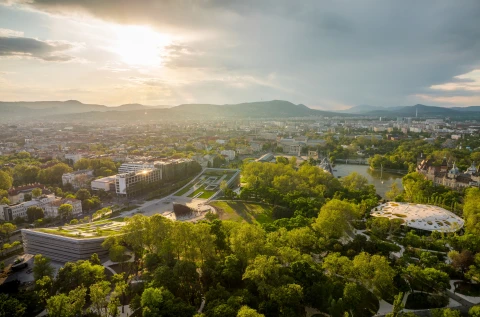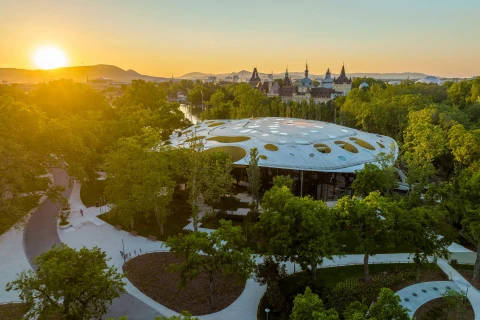

The reconstruction of the Museum of Fine Arts Recognised with the Europa Nostra Award
The all-encompassing reconstruction of the Museum of Fine Arts has been recognised with one of the most prestigious international heritage protection awards. The museum reopened in 2018 after its renovation won the Europa nostra Award, the European Union’s Cultural Heritage Award, in the Conservation category. The three-year reconstruction, designed by Ybl Prize laureate architect István Mányi, was implemented within the framework of the Liget Budapest Project.
The all-encompassing reconstruction of the Museum of Fine Arts has been recognised with one of the most prestigious international heritage protection awards. The museum reopened in 2018 after its renovation won the Europa nostra Award, the European Union’s Cultural Heritage Award, in the Conservation category. The three-year reconstruction, designed by Ybl Prize laureate architect István Mányi, was implemented within the framework of the Liget Budapest Project.
Projects submitted from all over Europe to the annual call issued by the European Commission are evaluated and the winners are selected by a jury of independent experts. This year 21 projects from 15 countries received the Europa Nostra Award, nine of them in the Conservation category.
The highly esteemed recognition was won by two other Hungarian projects besides that of the Museum of Fine Arts: the exhibition mounted by the Royal Palace in Gödöllő titled The Secret Life of a Palace and the UCCU Roma Informal Education Foundation were the winners in the Education Training and Awareness-Raising category.
The jury remarked that the professional reconstruction of the Museum of Fine Arts was “an excellent recuperation of the splendour of an early 20th-century museum. It represents a long-term and thoughtful effort to reinstate the Museum of Fine Arts in Budapest – an important institution in Europe – and is underpinned with a thoughtful philosophical basis. The modern interventions have been properly integrated and are appropriate for the additional needs of the museum.”
The jury stated that thanks to the reconstruction the damage caused by inappropriate alterations after the WWII was repaired, while new facilities were integrated to meet the needs of a modern museum. Visitors can now experience the museum as its designers had originally intended – says the jury statement.
The largest-scale and most complex reconstruction and modernisation project ever to have taken place in the Museum of Fine Arts’ history were completed in 2018. The works were based on the plans of the Mányi Studio, led by István Mányi, and realised within the framework of the Liget Budapest Project. They comprised the renovation of the stunning Romanesque Hall – which had suffered significant damage during WWII, and then underwent only superficial renovations and was used as a storage area –, the modernisation of the museum’s obsolete heating system, the installation of air conditioning in the exhibition halls, the renovation of the large part of the roof structure as well as building new exhibition and public service spaces and modern storage areas in the building. The comprehensive renovation and modernisation of the Museum of Fine Arts affected around 15,000 square metres, amounting to some 40 percent of the museum’s entire floor space. Thanks to the reconstruction project carried out by Magyar Építők Zrt., almost 2,000 square metres of former exhibition space was reinstated into its original function and the storage areas were expanded by five hundred or so square metres. A new, modern restaurant and café below ground level were also added to the revamped building.
The museum reconstructed and modernised to meet 21st-century visitor needs and professional requirements has already welcomed more than half a million visitors since its reopening in 2018.


